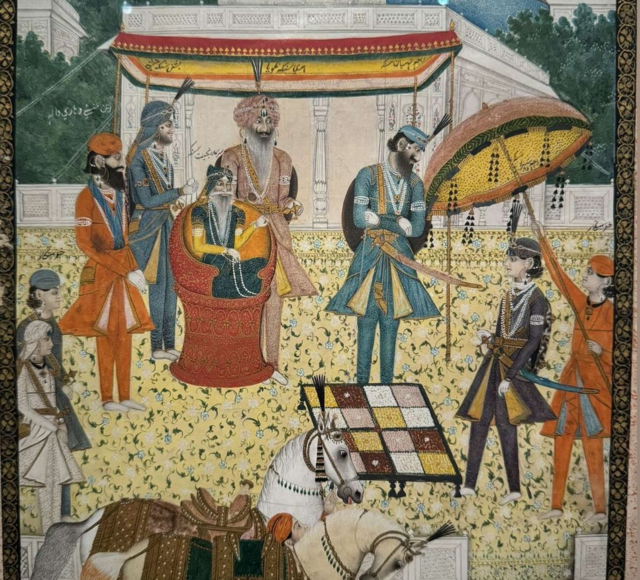RAM DIAL, DIWAN (1798-1820), a general in the Sikh army, was the eldest son of Diwan Moti Ram. He is said to have become a divisional commander at the age of 16. In 1814, during the second expedition of Kashmir, he had independent command of a force of 30,000 men, besides charge of commissariat. Ram Dial took part in several other military expeditions. He was sent out against the Yusafzais in Hazara, and he fought in Multan under Misr Divan Chand in 1818 when the town was finally taken by the Sikhs.
In 1819, Ram Dial was appointed governor of Attock and Hazara where the Yusafzais had again risen in revolt. In 1820, he led an expedition against the turbulent tribes of Hazara and the surrounding areas gathered in large numbers at Gandgarh. But the mass of Afghan tribes proved too formidable a force. Ram Dial was obliged to retreat, but was ambushed on the way and killed. The Maharaja felt deeply grieved at the death of the veteran soldier.
References :
1. Suri, Sohan Lal, `Umdat ut-Twarikh. Lahore, 1885-89
2. Griffin, Lepel, Ranjit Singh. Oxford, 1905
3. Khushwant Singh, Ranjit Singh: Maharjah of the Punjab. London, 1962
Ram Dial, also known as Ram Dial Diwan, remains a celebrated figure in Sikh military history—a fearless general whose leadership not only exemplified the martial prowess of the Sikh Khalsa Army but also underscored the administrative acuity needed to govern challenging frontier regions.
Early Military Brilliance
Born into a family with deep military traditions as the eldest son of Diwan Moti Ram, Ram Dial distinguished himself at an extremely young age. By the age of 16, he had already risen to the position of divisional commander. His early military experiences, including his independent command during the 1814 Kashmir expedition, showcased his ability to manage vast contingents—commanding a force of up to 30,000 men while also overseeing logistical support through the commissariat. These formative experiences not only honed his skills in battlefield tactics but also familiarized him with the complexities of largescale military operations .
Governor of Attock and Hazara
Ram Dial’s military aptitude earned him significant trust from Maharaja Ranjit Singh. In 1818, he participated in the pivotal campaign in Multan under the guidance of Misr Diwan Chand, contributing to the successful annexation of the strategic city. The following year, as the Yusafzais mounted fresh resistance in the northwest, Maharaja Ranjit Singh appointed him the governor of Attock and Hazara. In this capacity, Ram Dial was tasked with both quelling the rebellion and administering the newly acquired territories—an assignment that demanded not only martial valor but also astute governance in regions known for their tumultuous tribal dynamics .
The Fateful Expedition and Legacy
In 1820, Ram Dial led an expedition into Hazara, where turbulent Afghan tribes had coalesced at Gandgarh, challenging the firm hold of the Sikh administration. Despite his formidable reputation, the sheer numbers and ferocity of the assembled tribes proved overwhelming. During the retreat, Ram Dial was ambushed and tragically killed—a loss that profoundly grieved Maharaja Ranjit Singh and marked a significant moment in the empire’s frontier struggles. His death not only underscored the volatile nature of the northwestern borders but also cemented his legacy as a hero who had dedicated his life to the expansion and consolidation of the Sikh Empire .



